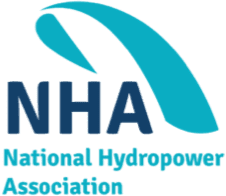- Show all
- Asset Management
- Buoy
- Canal
- Climate Change
- Controls
- Dam Safety
- Environmental Impact
- Fish and Aquatic Resources
- Future Grid
- Generator
- Governor
- Hydraulic Forecasting
- Hydraulic Optimization
- Hydrokinetic
- Intake Gates
- Markets
- Penstock
- Regulatory Process
- Renewable Integration
- Sediment Transport
- Shoreline and Riparian Resources
- Spillgates
- Tidal
- Transmission Services
- Turbine
- Water Management
- Water Resources
- Water Systems
- Wave
Marine Energy
A Deep-Water MHK Shakedown Tank
Lead Companies
Sandia National Laboratories
Lead Researcher (s)
- Budi Gunawan
This project will design, execute modifications and upgrades the existing infrastructures at Sandia National Laboratories (Sandia) to accommodate 1) shakedown testing of marine energy (ME) systems (task 1), and 2) structural testing of belt and rope components used in ME systems (task 2). Once complete, the shakedown testing facility will function as a crucial shakedown test site for developers at a high TRLs prior to at-sea deployments. The Sandia Lake facility will target shakedown testing to reduce the risk and cost of at-sea deployments. The belt and rope testing facility will enable short- and long-term structural testing to understand the mechanical properties and technical limitations of not only belt and rope materials, but also the stitching or clamping at the end of the belt or rope, which is known as a potential weak link in a previous study. The facility will help determine the reliability and maintenance requirement of belt and rope components, and thereby reduce the risk of at-sea deployments
Technology Application
Marine Energy
Research Category
Technology
Research Sub-Category
Hydrokinetic
Status
ongoing
Completion Date
TBD
Marine Energy
Advanced Materials
Lead Companies
Sandia National Laboratories
Lead Researcher (s)
- Bernadette Hernandez-Sanchez
The project goal is to reduce uncertainty in using composites for commercial MHK designs by investigating their performance, potential for manufacture, and providing validated composites resources to industry. A 2015 MHK Composites Workshop identified that industry requires a better understanding of composite materials & structural performance properties related to MHK conditions; they also need validated MHK resources (database & best practices handbook) they can trust to guide development. This led to our Phase I Proposal: Material Design Tools for Marine Hydrokinetic Composite Structures. In 2020, the Materials and Manufacturing Strategy for Marine and Hydrokinetic Energy Technologies Research & Development was developed and identified the next level of composites materials research and key gap areas.
Technology Application
Marine Energy
Research Category
Technology
Research Sub-Category
Hydrokinetic
Status
ongoing
Completion Date
Expected 2022
Marine Energy
Advanced Materials and Manufacturing Reliability
Lead Companies
PNNL
Lead Researcher (s)
- George Bonheyo
The overall project objective is to make assessments (using coupons & substructures) and then provide a descriptive resource of materials properties and solutions that address the prioritized needs of the industry.
Technology Application
Marine Energy
Research Category
Technology
Research Sub-Category
Hydrokinetic
Status
ongoing
Completion Date
TBD
Marine Energy
AMEC Support-SNL (FOA 2234 Support UNH)
Lead Companies
Sandia National Laboratories
Lead Researcher (s)
- Vince Neary
Sandia National Laboratories (SNL) will collaborate with the Atlantic Marine Energy Center (AMEC) university consortium under FOA-2234, primarily in an advisory capacity, on the major objectives of Topic Area 2: establishing the AMEC, operating modern test facilities, and conducting marine energy research. The project will be focused on providing support to help establish and operate AMEC as a university-led consortium to address the ongoing needs for research and development (R&D) and testing to advance marine renewable energy (MRE) technologies towards commercialization, and to develop Powering the Blue Economy (PBE).
Technology Application
Marine Energy
Research Category
Technology
Research Sub-Category
Hydrokinetic
Status
ongoing
Completion Date
TBD
Conventional Hydro
An Assessment of Energy Potential at Non-Powered Dams in the United States
Lead Companies
Oak Ridge National Laboratory (ORNL)
Lead Researcher (s)
- Shih-Chieh Kao (kaos@ornl.gov)
Oak Ridge National Laboratory and Idaho National Laboratory conducted an assessment on the energy potential at non-powered dams (NPDs) throughout the United States. The laboratories studied 54,391 of the 80,000+ NPDs in the nation to quantify the potential capacity and generation available from adding power production capabilities. The remaining dams were eliminated from the study because of erroneous geographic information, erroneous flow or drainage area attributes, or their height was less than five feet. Quality control and review processes were conducted to ensure that all dams in the study were analyzed as accurately as possible.
Technology Application
Conventional Hydro
Research Category
Technology
Research Sub-Category
Water Resources
Status
complete
Completion Date
2012
Marine Energy
AquaHarmonics Support FOA 1663
Lead Companies
Sandia National Laboratories
Lead Researcher (s)
- Budi Gunawan
As a result of the Funding Opportunity Announcement (FOA) 1663, Marine and Hydrokinetic Technology Development and Advancement, a team led by AquaHarmonics, Inc. (AH), that includes Sandia National Laboratories (SNL) was selected as one of the FOA award recipients. The main objective of the proposed project is to advance the technology readiness of the AquaHarmonics’ device, by developing a 1:7th scale prototype and conducting an open water testing for an extended period (~12 months) at the Navy’s Wave Energy Test Site (WETS). During the open water testing, it is expected that the device will maintain an Average Climate Capture Width per Characteristic Capital Expenditure (ACE) target of at least 3m/M$, as has been demonstrated previously on a smaller scale device during the Wave Energy Prize competition. SNL will leverage its capability and experience in WEC design and testing to assist AquaHarmonics in WEC dry and open water testing, device design and PTO-control model development.
Technology Application
Marine Energy
Research Category
Technology
Research Sub-Category
Wave
Status
ongoing
Completion Date
TBD
Marine Energy
Assessing the Use of Environmental DNA to Monitor Changes in Habitats Caused by Offshore Energy Developments
Lead Companies
Pacific Northwest National Laboratory
Lead Researcher (s)
- Lenaig Hemery
Technology Application
Marine Energy
Research Category
Technology
Research Sub-Category
Wave
Status
ongoing
Completion Date
TBD
Don’t see your waterpower research?
Have questions about WaRP?
Contact Marla Barnes at: marla@hydro.org



